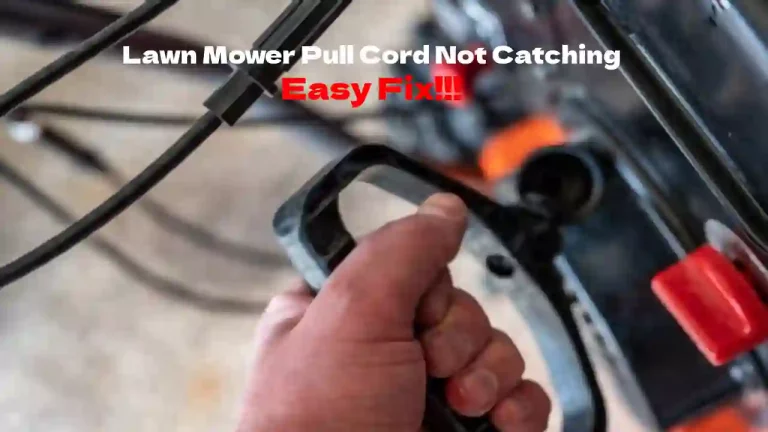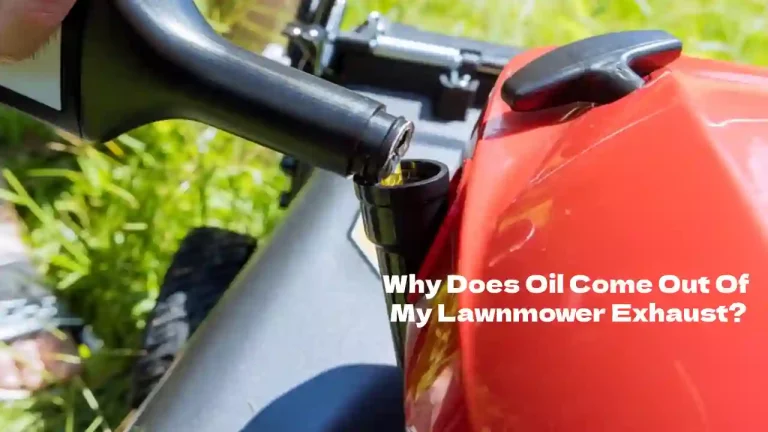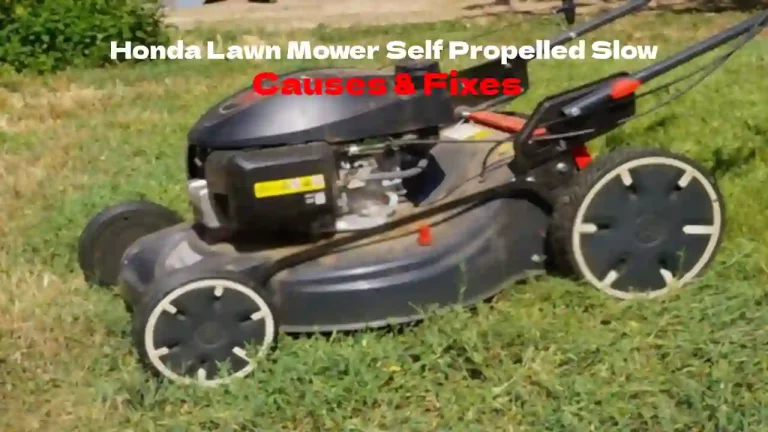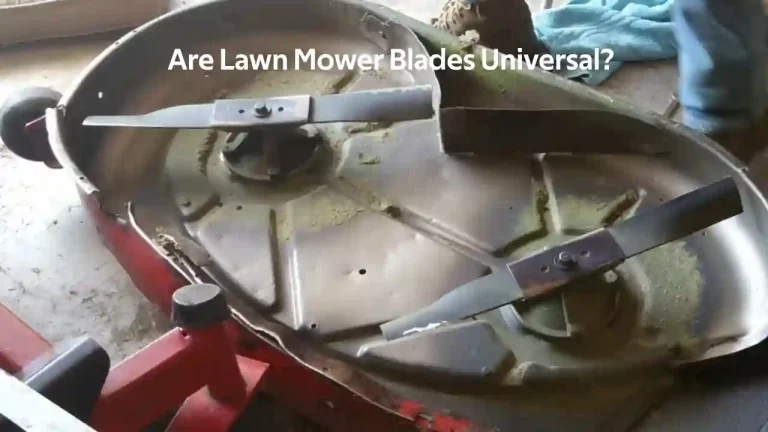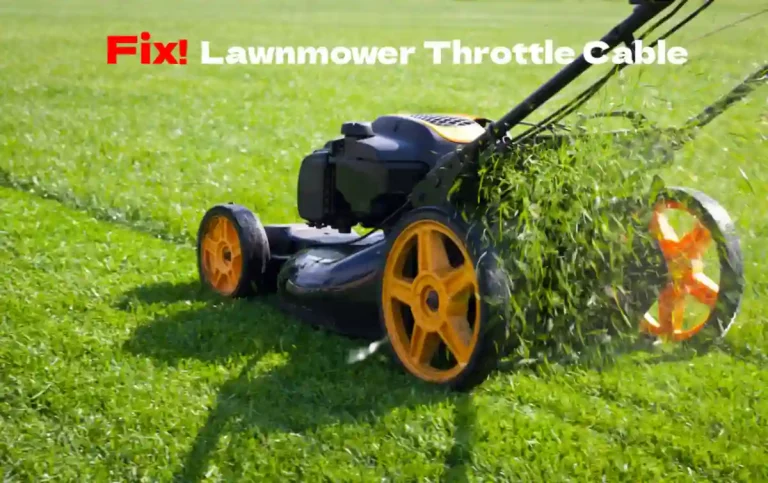With winter having said goodbye and spring starting to welcome the new life in your garden, now is an excellent time to give all your engine-driven garden tools a good clean and service. If there is gas in the tanks, clean it out and refill it with fresh fuel. Replace the sparkplugs, start each one, and run them for a few minutes.
If your lawnmower only runs for a short while, it is generally due to one of the following causes.
- The Jets maybe obstructed.
- The gas lines are restricted.
- The gas lines leak.
- The gas filter is partially blocked.
- The seal between the carburetor and the head is compromised.
We expect lawnmowers to start when required, and when they don’t, it is very irritating. It’s even worse when the lawnmower starts and then runs for a short time and dies.
Fortunately, this is a common occurrence, and you don’t need a degree in engineering to fix it.
What Is Wrong When The Lawnmower Starts And Then Dies?
For any internal combustion engine to work, it needs three things – gas, air, and an ignition source. If a step is compromised, the machine will not start.
The best way to find the problem is to follow the sequence it needs to run and identify what step is compromised.
- It all starts at the petrol tank. If there is no fuel, the engine will not start.
- Petrol is drawn from the gas tank to the bowl below the carburet
- or. When the engine cycle starts, the carburetor forms a vacuum, which sucks the fuel through the main jet and into the carburetor.
- The carburetor mixes the air and fuel and injects it into the cylinder as the piston reaches the top of its cycle.
- Simultaneously, the ignition coil sends an electrical charge to the spark plug, producing a spark.
- The spark ignites the fuel-air mixture.
- The subsequent combustion and expansion of gasses force the piston down in the chamber.
- As the piston goes down and up, it turns the crankshaft which causes the blade to spin.
- An exhaust port opens and expels the combusted gas out of the exhaust.
- The piston starts the process again, and the whole cycle continues.
If any part of the above chain is broken, the lawnmower engine will stop.
What Could Be Causing The Engine To Start And Then Stop?
We have a few clues in the case of the engine starting and running for a short period.
- The mechanics of the engine are working.
- Some fuel gets to the engine – possibly only for a short time.
- Some air gets to the engine – possibly in insufficient quantities.
- The ignition is activating the spark plug.
- There is sufficient compression, so the piston and rings are probably in good shape.
As the ignition is a mechanical system that does not deviate once running, there is a good chance it is not the problem.
It leaves us with too little air or insufficient gas being delivered.
Start at the gas tank, follow the gas into the engine, and see where the problem is.
Check The Gas Tank
Now is an excellent time to check if there is gas in the tank. If the gas tank is almost empty, minor changes to the angle of the lawnmower may stop the gas from flowing.
If not, pour sufficient gas in and see if the situation has changed.
Check The Gas Lines
Over winter, gas left in Lawnmowers can get stale and “gummy.”. It degrades the fuel’s ignition qualities and attacks the soft materials in the fuel system.
The gummy fuel may cause a blockage in the fuel filter or the pipe.
Check The Fuel Filter
If the fuel filter is partially blocked, insufficient quantities may get to the engine to keep it running.
In most lawnmowers, you can check the filter by disconnecting the fuel pipe from the tank and removing the filter. If there is debris or gummy fuel inside, clean it and try again.
Check The Fuel Line
There may be two possible issues with the fuel line.
- The fuel line is partially blocked.
- The fuel line is damaged.
Take the fuel line off both ends; hold it straight, and look down one end. There is a blockage if you can’t see out the other side. If so, obtain a new pipe and replace it.
Check for any holes in the pipe. If there is, the air gets in the system, and insufficient gas is drawn to the carburetor.
The Air Filter May Be Blocked
You can access the air filter by unclipping the air filter box and removing the cover. A blocked filter would tend to prevent the lawnmower from starting or cause it to run with less power.
However, we must remove the air filter to check the next step with the gas, so we may as well check, and if dirty, replace the air filter.
If the lawnmower engine is still not behaving and stopping after a short while, the most likely culprit is in the carburetor.
Check The Carburettor
The carburetor draws gas from the fuel tank. The gas travels through the filter, down the pipe, and into a bowl at the bottom of the carburetor.
Gas is drawn up through the main jet and into the carburetor. If there is an air leak, the carburetor will not be able to create a sufficient vacuum to draw enough petrol into the engine.
Check The Carburettor Mounting
Give the carburetor a wiggle. If the attachment to the cylinder head is loose, you should tighten it up. If the carburetor seems tightly secured, skip this step and move to the next one.
There are three possible points where the carburetor mounting may be loose. Check the following steps to identify which may be loose.
- Remove the air filter cover.
- Juggle the carburetor to see if the outer mounting bolts are loose.
- If the bolts holding the carburetor are tight, remove the lawnmower’s engine cover to access the bolts attaching the intake to the head.
- You may need to remove the shroud and petrol tank support.
- You may also need to remove the recoil starter unit.
- Check the bolts holding the intake to the head are tight.
- If these bolts are tight, undo them and remove the carburetor.
- Check the plate bolted to the head that holds the carburetor.
- Tighten these bolts, and use a thread locker to ensure they don’t loosen again.
- Reassemble the engine in the reverse sequence.
If the carburetor draws gas from the bowl faster than the bowl is refilled, the engine will start and then cut out.
Check The Fuel Jets
- Switch of fuel tap. If there is no gas tank tap, pinch the gas pipe closed with locking pliers.
- Unplug the spark plug.
- Undo the nut holding the bowl to the bottom of the carburetor.
- Remove the bowl.
- Check the bowl for water or other contaminants.
- The jets are fitted between the gas pipe and the carburetor bowl on most lawnmowers. Check the location for your lawnmower.
- There may be two jets you need to clean, the main one and a pilot jet
- Remove it with an appropriately sized socket.
- Run a thin strand of wire (a bristle from a steel brush works well) through each hole on the jet.
- It is also good to spray carburetor cleaner into the jet’s holes until the spray comes out the other side.
- Reinstall the carburetor in the reverse steps in which you dismantled it.
It should have solved the problem. If it hasn’t, double-check that the jets are not still partially blocked and try again.
Conclusion
A lawnmower engine that starts and then stops is a common problem, particularly after the winter break. It is almost certainly a problem with insufficient fuel getting through to the carburetor and is easily fixed if you methodically work the issue.
It may seem intimidating to strip the lawnmower engine, but if you work diligently through each step, keeping track of all the bolts, cables, and springs you removed, you will be surprised at how easy the process was.

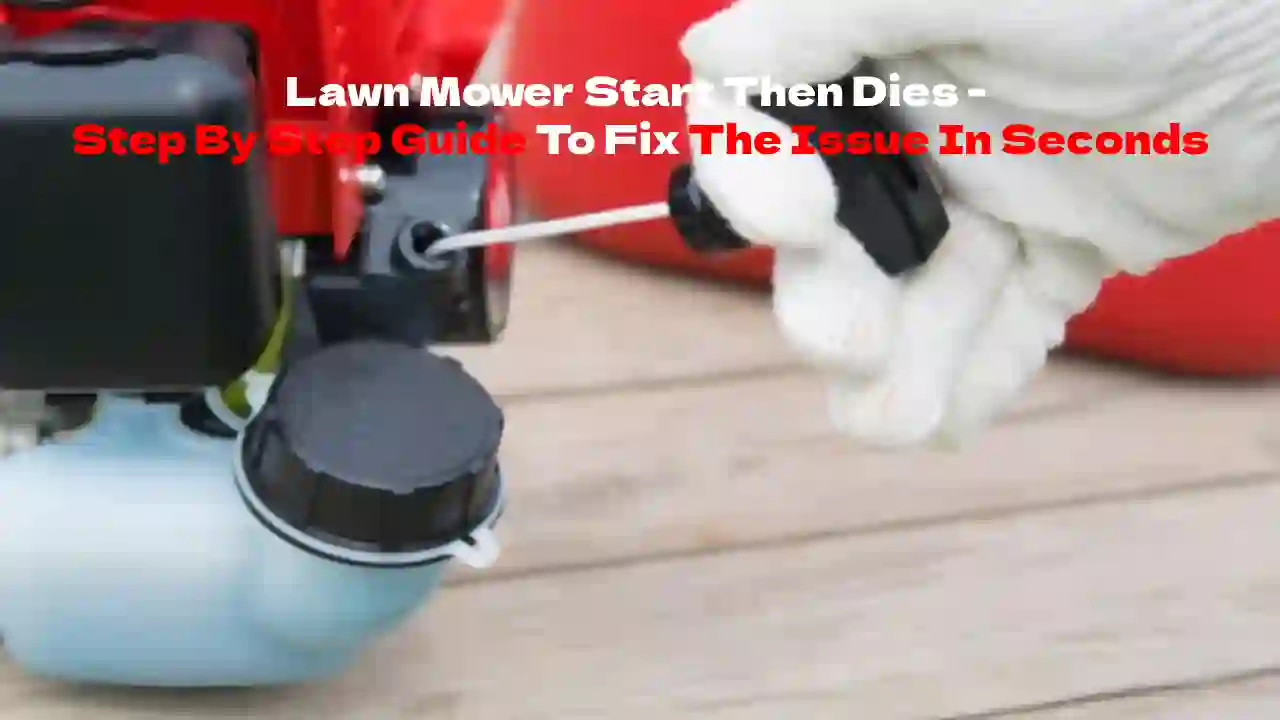
![Toro Lawn Mower Won’t Start – [Solved] 10 Possible Causes And Fixes](https://howtl.com/wp-content/uploads/2022/02/toro-lawnmower-wont-start-768x432.webp)
